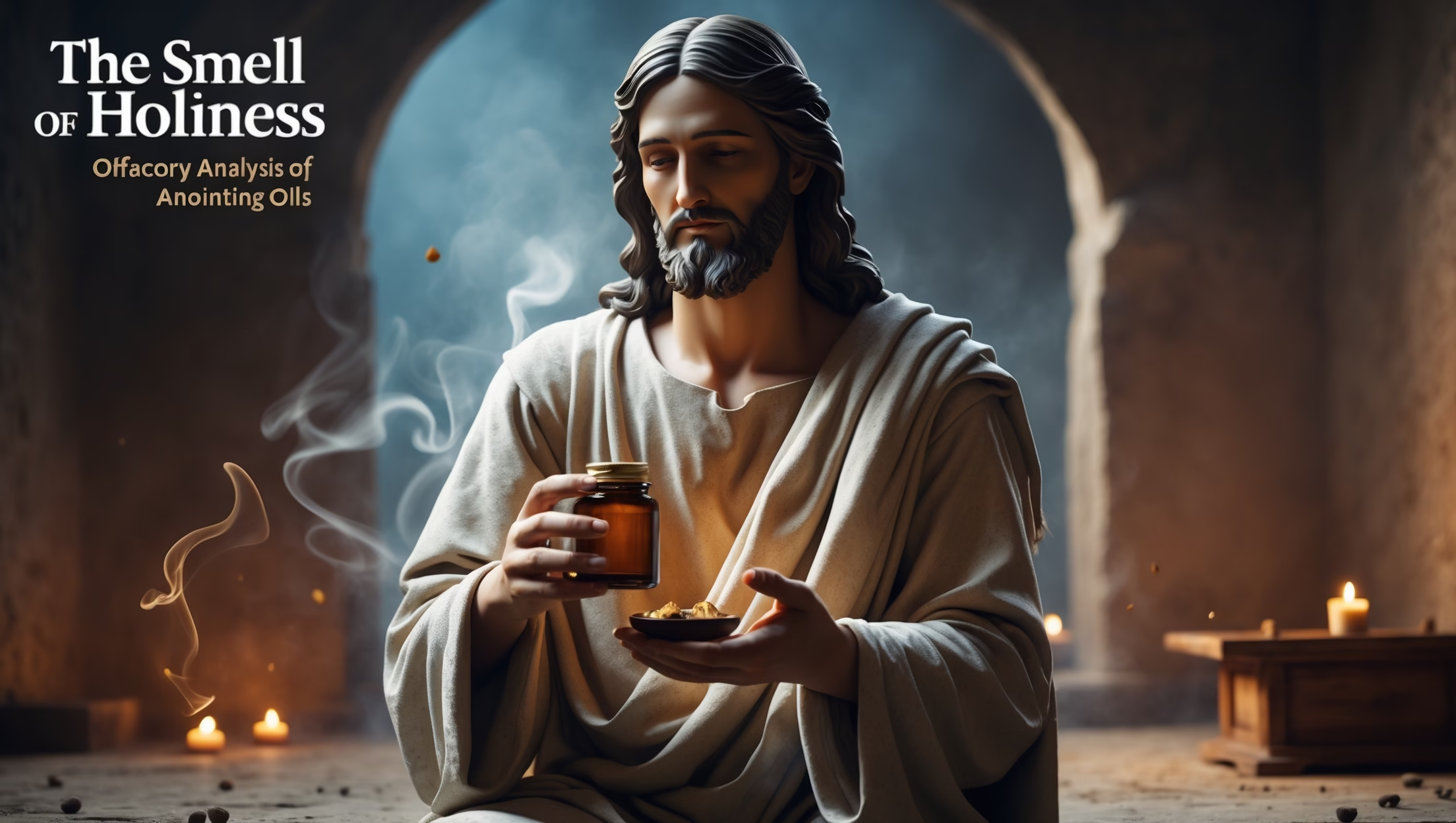How Scent Defined Sacred Spaces
When considering the worship practices of the ancient Israelites and early Christians, scent played a profound role. Olfactory cues were more than decorative—they defined sacred space, signaled divine presence, and mediated human interaction with the holy. The Gospels provide several key examples, particularly in Jesus’ ministry, where fragrance became both symbolic and functional. Understanding these scents enriches our appreciation of ritual, theology, and sensory experience.

Chemical Archaeology: Spikenard and Myrrh
Spikenard (Mark 14:3)
One of the most famous references to fragrance in the Gospels occurs when Mary anoints Jesus’ feet with expensive spikenard. Modern chemical archaeology confirms that spikenard originated in the Himalayan region. Its pungent aroma was rare and costly—the modern equivalent exceeds $30,000 per pound. Beyond monetary value, spikenard’s intense scent transformed the immediate environment, signaling sanctity and devotion.
The act of anointing with spikenard carries layered meaning: extravagant worship, preparation for burial, and a theological statement about the Messiah’s consecration. Judas’ objection to “waste” highlights the cultural and economic tension embedded in scent-based rituals.
Myrrh at the Crucifixion
Myrrh, another aromatic substance referenced in Mark 15:23, had dual purposes. It functioned as a preservative in burial practices, masking the odor of decay, and also held mild analgesic properties. When applied at the crucifixion, myrrh symbolically intersected death and divine care, highlighting the paradox of suffering intertwined with sacred purpose.
Sensory Worship in Sacred Texts
Ancient prescriptions for scent were formalized in texts such as Exodus 30, which details the composition of temple incense. Ingredients like frankincense, stacte, and onycha combined to create a “pleasing aroma to the Lord.” These prescriptions reinforced the idea that smell mediates spiritual experience—temple worship was not purely visual or auditory; it was immersive and multi-sensory.
Medieval traditions continued this practice with chrism oils used in baptisms, confirmations, and coronations. The scent was imbued with sanctity, symbolizing divine presence and blessing.
Modern Revival of Olfactory Symbolism
Contemporary worship movements have rediscovered the power of fragrance. Essential oils are incorporated into charismatic services, creating immersive environments for prayer and meditation. Worship planners are increasingly conscious of scent design, using olfactory cues to evoke presence, focus, and emotional engagement.
Even in virtual reality Bible experiences, designers include ambient scents to simulate ancient rituals, demonstrating the enduring impact of fragrance as a medium of theological communication. The multisensory approach helps modern believers engage with scripture in a more embodied way.
Theological Implications of Olfactory Worship
Scent in Jesus’ ministry underscores several theological principles:
- Sacred Presence: Aroma marks holy spaces and events, reinforcing the divine-human encounter.
- Embodied Devotion: Worship engages the whole body, including senses often overlooked in contemporary practice.
- Symbolic Theology: Fragrance represents life, purity, consecration, and sometimes death transformed by divine purpose.
Paul later references this symbolism in 2 Corinthians 2:15, describing believers as the “aroma of Christ” in a spiritual and literal sense. Understanding the olfactory dimension helps modern readers appreciate the depth of worship and the sensory richness embedded in biblical texts.
Modern Applications and Cultural Impact
Today, olfactory symbolism continues to shape religious practice:
- Charismatic and Pentecostal Churches: Use incense, oils, and scent-based rituals to enhance worship.
- Christian Education and Museums: Biblical laboratories and museum exhibits recreate incense and anointing oils for experiential learning.
- Virtual Reality Bible Experiences: Developers integrate ambient scents to simulate temple worship and events like the Bethany anointing.
These applications remind us that faith is not merely intellectual—it is embodied, sensory, and deeply human.
Key Insights: Fragrance as Theological Language
The study of anointing oils and incense reveals that Jesus’ ministry—and biblical worship more broadly—engaged smell as a powerful medium for teaching, devotion, and sacred encounter. From spikenard and myrrh to temple incense and virtual reality recreations, olfactory symbolism communicates messages that transcend words, shaping spiritual experience across cultures and centuries.










